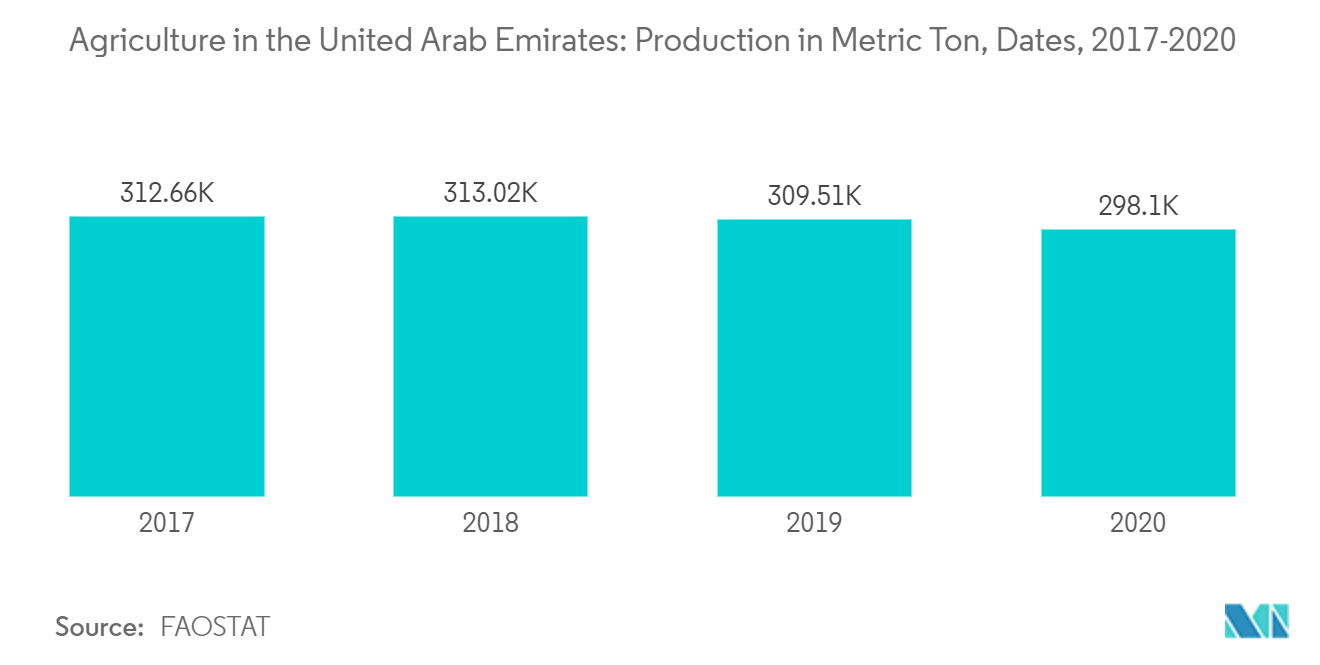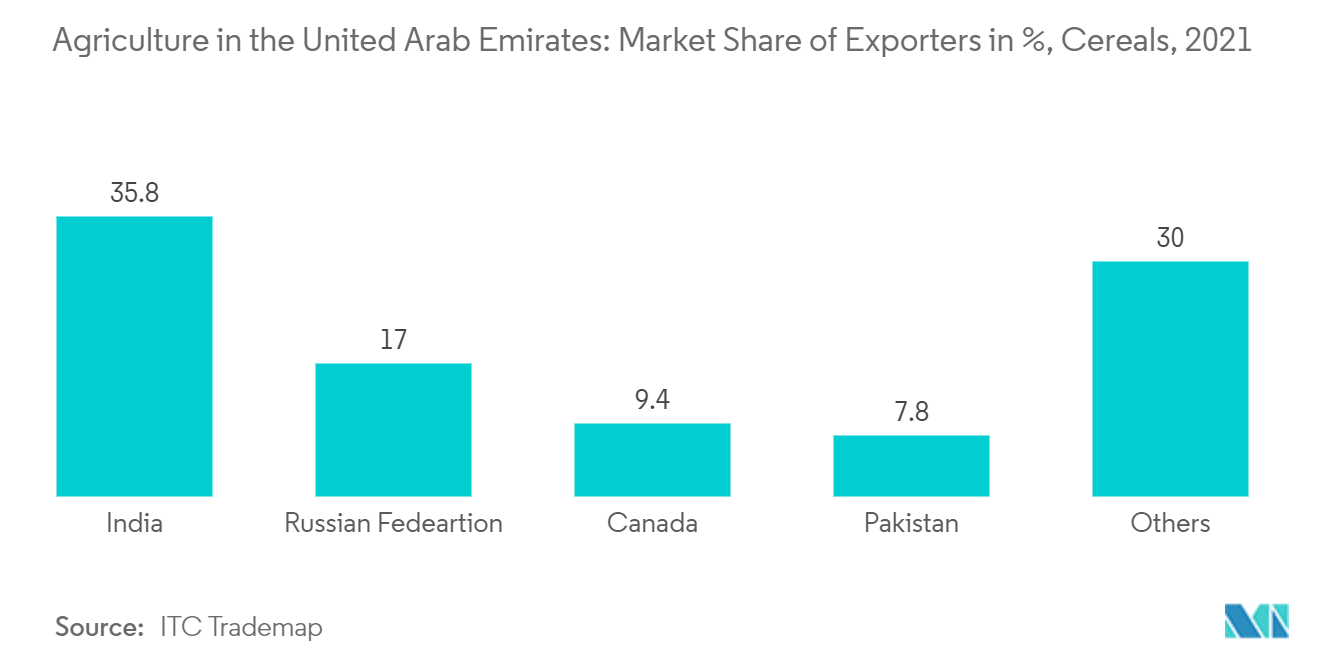Market Trends of UAE Agriculture Industry
This section covers the major market trends shaping the UAE Agriculture Market according to our research experts:
Increasing Crop Production Marking Steady Growth in Agriculture
Dates are a major crop grown in the United Arab Emirates. According to Food And Organisation, dates lead the agricultural crop production, amounting to 312,657 Metric tons in 2020. Despite various unfavorable soil and climatic factors, the production of various crops in the United Arab Emirates is increasing due to various initiatives by the government, such as free cultivation, 50% lesser cost of crop protection, veterinary services, and fertilizers at 50% lesser cost. The production of dates amounted to 312,65 Metric ton. The date production has slightly declined in 2020 as compared to the previous year but it is expected to bounce back given the favorable policies set forth by the government and the steady demand from the market.
According to FAOSTAT, a lot of commodities such as tomatoes, production fell in the year 2020 by approx 28% as compared to the previous year. Although certain greens such as cabbage, and broccoli have witnessed higher production numbers, which have increased by 20-30% due to increased commercialized greenhouse and indoor farms.
Further, the country considers food security to be essential to the security and well-being of its citizens and residents. In 2018, the United Arab Emirates launched its National Food Security Policy to increase production by 30-40% in 10 years. The country also aims to practice sustainable agriculture to improve the efficiency of its farms, in line with the UN Sustainable Development Goals. The government of the UAE is investing in the agricultural sector to increase self-sufficiency. For example, in July 2019, the Ministry of Climate Change and Environment (MOCCAE) signed a memorandum of understanding(MoU) with Aswaaq, a supermarket to increase the sales of local products grown in hydroponic and organic farms in a bid to promote locally grown food products. The Ministry of Climate Change and Environment is partnering with private players for the development of farmers by supporting the marketing of their products. Lulu Group International, Union Cooperative Association, and Majid Al Futtiam Hypermarkets LLC are some of the private players promoting marketing.

Import of Major Cereals
According to ITC Trade Map, the import of cereals was valued at USD 1,189.3 million in 2020, an increase from the USD 1,080.3 million recorded in 2019. Increased import of cereals is due to high local consumption and a decrease in government grain stocks. Among cereals, rice is majorly imported. The majority of UAE rice imports are milled rice, while others include paddy, brown, and broken rice.
As the country seeks to enhance its food security amid the disruption of supply chains caused by the COVID-19 pandemic, an agricultural trading platform to connect Indian farmers with food companies in the United Arab Emirates was established in 2020. The Dubai Multi Commodities Centre's platform, named Agriota and developed with India's CropData Technology, enables trading in cereals, pulses, oilseeds, fruits, vegetables, spices, and condiments.
Dubai's rebounding tourist sector may enhance demand for food goods, supporting both domestic production and cereal imports. According to UAE official figures, Dubai's tourist industry contributes 10 to 15% of the UAE's overall GDP each year and is a key source of demand for baked goods, processed meals, restaurants, and fast food chains that rely on cereals.
According to ITC Trade Map, India is the dominant supplier of cereals to the United Arab Emirates and held a 35.8% share in total imports in 2020. The Russian Federation was ranked second highest exporter to the United Arab Emirates, with a 17% share of total imports. The increasing imports suggest that opportunities are increasing in the United Arab Emirates.


